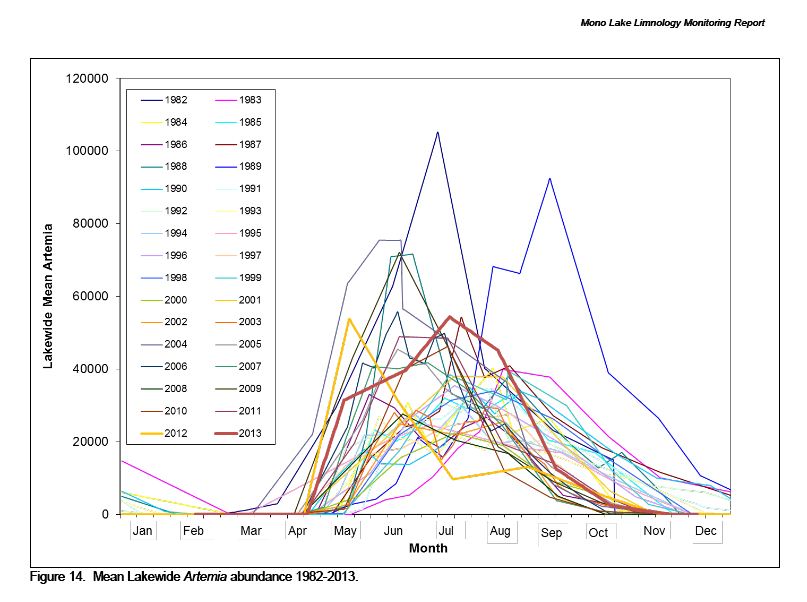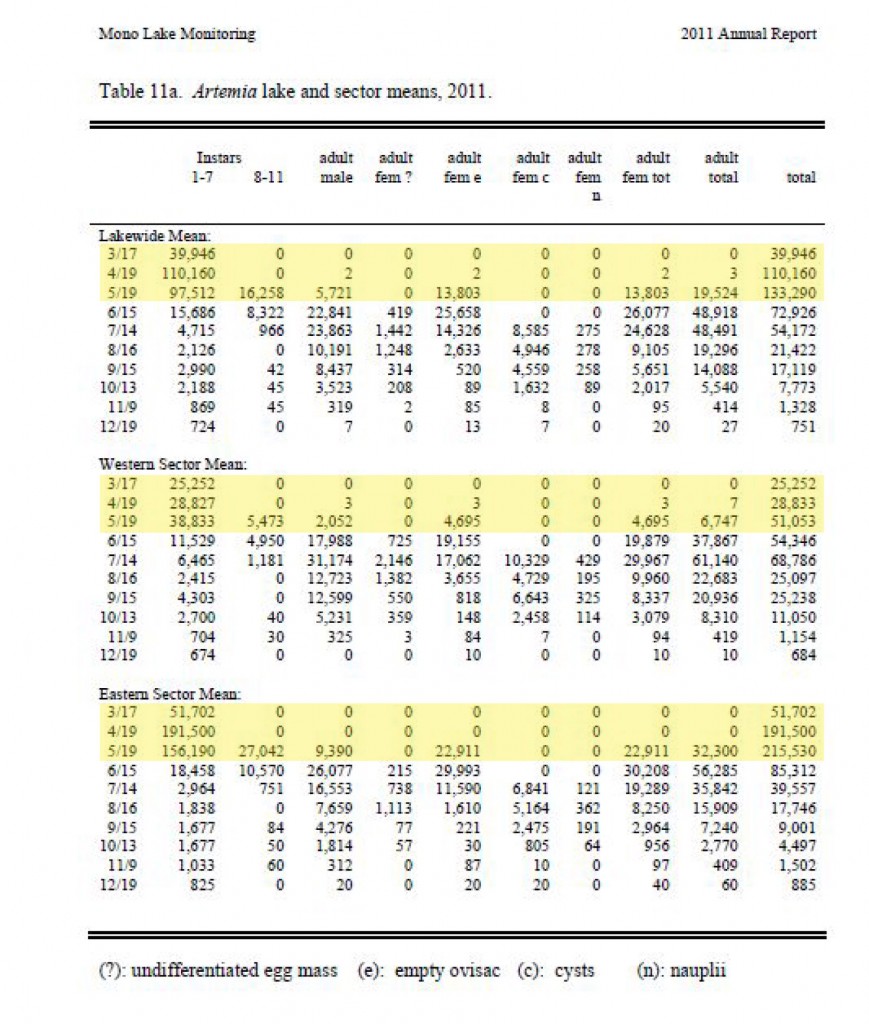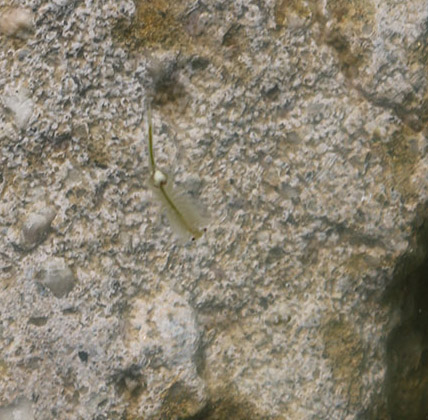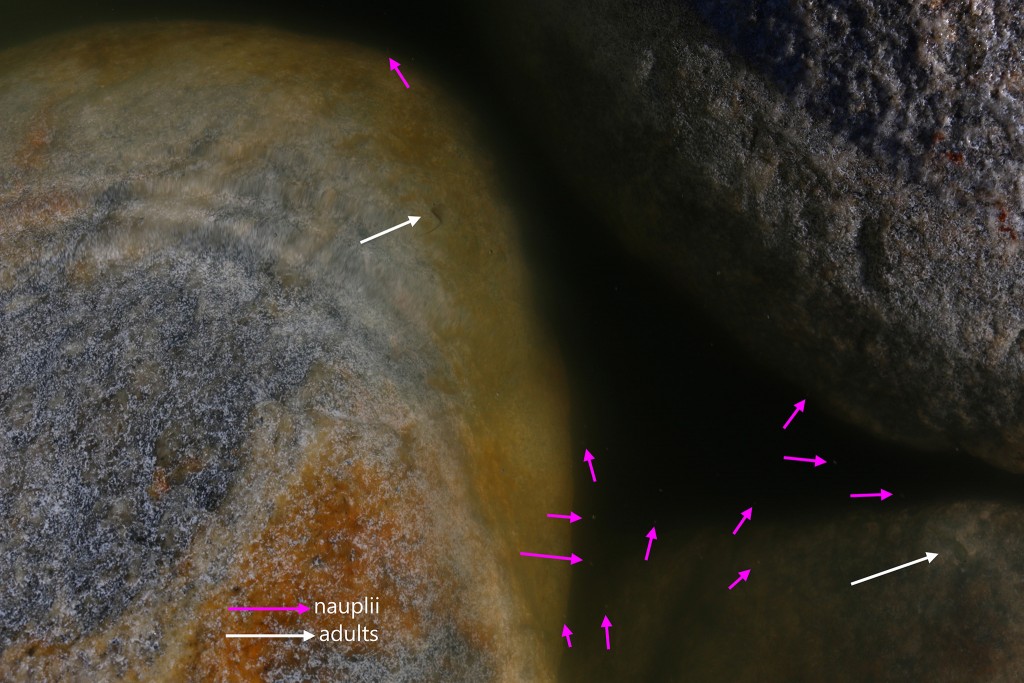
Artemia monica is the unique species of brine shrimp found only in Mono Lake. During the summer months, trillions of shrimp inhabit Mono Lake’s waters—enough to be a critical food source for millions of birds. Once winter begins to set in the shrimp die off, and the birds migrate on. A new generation of shrimp hatches in the spring, food for next year’s birds in the following summer. This process has repeated itself enough times and with enough consistency that all our favorite Mono Lake birds have figured it out and rely on the food supply.
Figure 14 (below) of the annual Mono Lake Limnology Monitoring Report shows the lake’s average abundance of adult Artemia per square meter water column for each month starting in 1982 and ending in 2013. You can see that Mono Lake’s adult brine shrimp are most abundant in summer, and if you’ve visited Mono Lake during the summer, you probably know some of the bird species that show up for the feast.

What Figure 14 doesn’t show is that Artemia has many stages of life—specifically 12 stages (or “instars”). Table 11a (below) helps clarify this point. The first column in Table 11a labeled “Instars 1–7” represents the earliest stages of Artemia (called nauplii larvae) and the second column “Instars 8–11” represents the adolescent stages (instars 12 and up are adults). What I would like to point out from this table is that significant numbers of shrimp in the adolescent and adult stages don’t become present until May. While this is just for the year 2011, other years have a very similar pattern.

The first image below shows a pregnant female brine shrimp and the second image shows some adult brine shrimp swimming with nauplii. What is unexpected is that the two images below were taken February 15, 2015. Not only did it seem unusual that there was so much instar variation, but you don’t typically find many adults in February (as Figure 14 shows).


Does this mean we will see more shrimp in March compared to previous years? Will this change when the adult shrimp populations might peak for 2015? We can only observe and ask questions at this point, but it will be interesting to see what Figure 14 and Table 11a will look like for 2014 and 2015—stay tuned. The annual monitoring report for 2014 will be finalized in May 2015, and for this March’s data we will have to wait until May 2016.

Always interesting to compare “sister” shrimp populations. In Great Salt Lake we have Artemia franciscana. Our brine shrimp harvest season begins October 1 and ends in February. The cysts are harvested, dried and marketed for aquaculture around the world. The management of the brine shrimp harvest is based on a population model of 21 cysts/liter at the beginning of December. Factors that can affect the population and the harvest include – temperature, salinity + phytoplankton.
In the short piece above nothing was mentioned about salinity and whether it has an influence on your shrimp. Could you please provide some details about this? Thanks.
In saline,
Lynn
FRIENDS of GReat Salt Lake